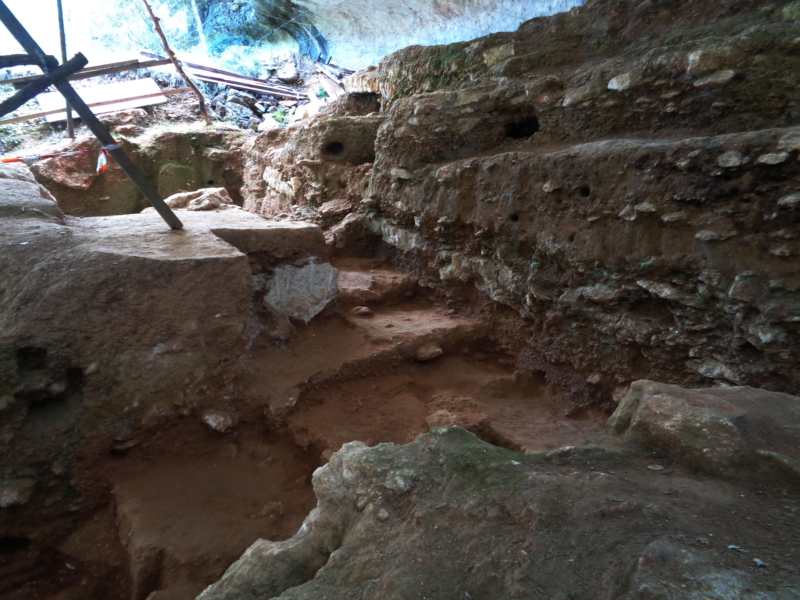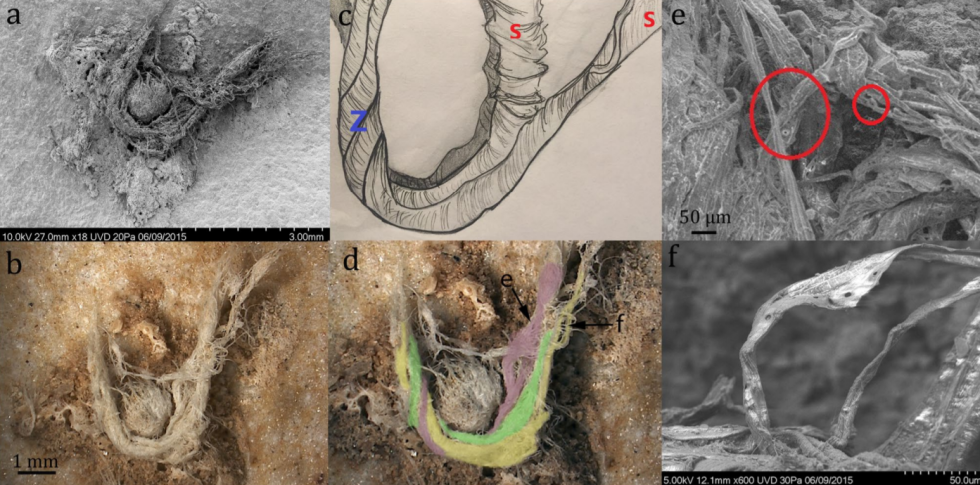World’s oldest yarn hints that Neanderthals had basic math skills

Enlarge / This is what Abri du Maras looks like today, with archaeologists digging into its ancient past. (credit: M-H. Moncel)
A tiny scrap of thread stuck to the lower side of a stone flake offers a huge insight into Neanderthal life. The 6.2mm (0.24 inch) long bit of thread, spun from plant fibers, is the oldest example of the material ever found. According to uranium-series dating, the thread came from a layer of sediment between 52,000 and 41,000 years old at a Neanderthal site called Abri du Maras, in France. Its nearest rival for the "oldest string ever" title is a fragment of fiber from a 19,000-year-old site in Israel.
When Kenyon College archaeologist Bruce Hardy and his colleagues looked at the thread under a microscope, the fibers turned out to be from bast: a fibrous layer of tissue just beneath the bark of a tree. These particular fibers had probably come from a conifer like pine, which would have been available nearby, according to pollen and charcoal traces from the site. An ancient craftsperson had twisted fibers together clockwise to make twisted bundles and then twisted three bundles together counterclockwise to make a three-ply cord. The cord was about 0.5mm thick (lace weight, if you're a modern knitter or crocheter).

a) SEM photo of ancient thread fragment from Abri du Maras; (b) 3D Hirox photo of the thread fragment; (c) schematic drawing of the thread fragment; s-twist sections are the clockwise-twisted bundles of individual bast fibers, and z-twist sections are the counterclockwise-twisted plies, made up of several bundles twisted together; (d) enlarged Hirox photo with cord structure highlighted. [credit: Hardy et al. 2020 ]
Approximately 46,000 years ago, the thread may have been wrapped around the end of the 60mm (2.4 inch) long stone tool as a grip, or it may have been part of a net or woven bag that held the tool. It may even have been completely unrelated-just a bit of domestic jetsam dropped on the same patch of cave floor where the stone flake later wound up.
Read 7 remaining paragraphs | Comments